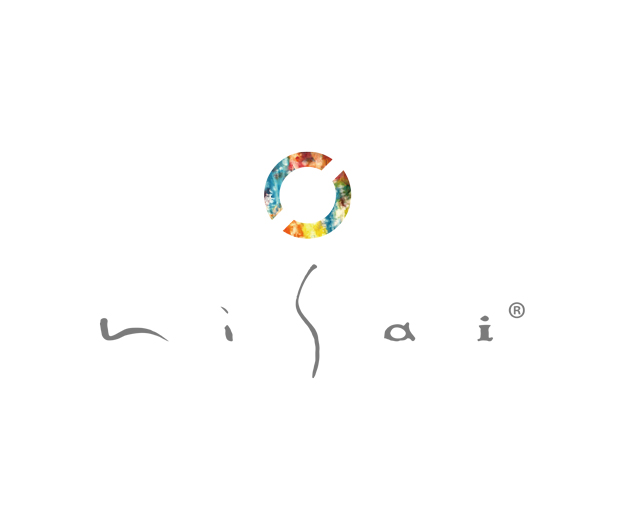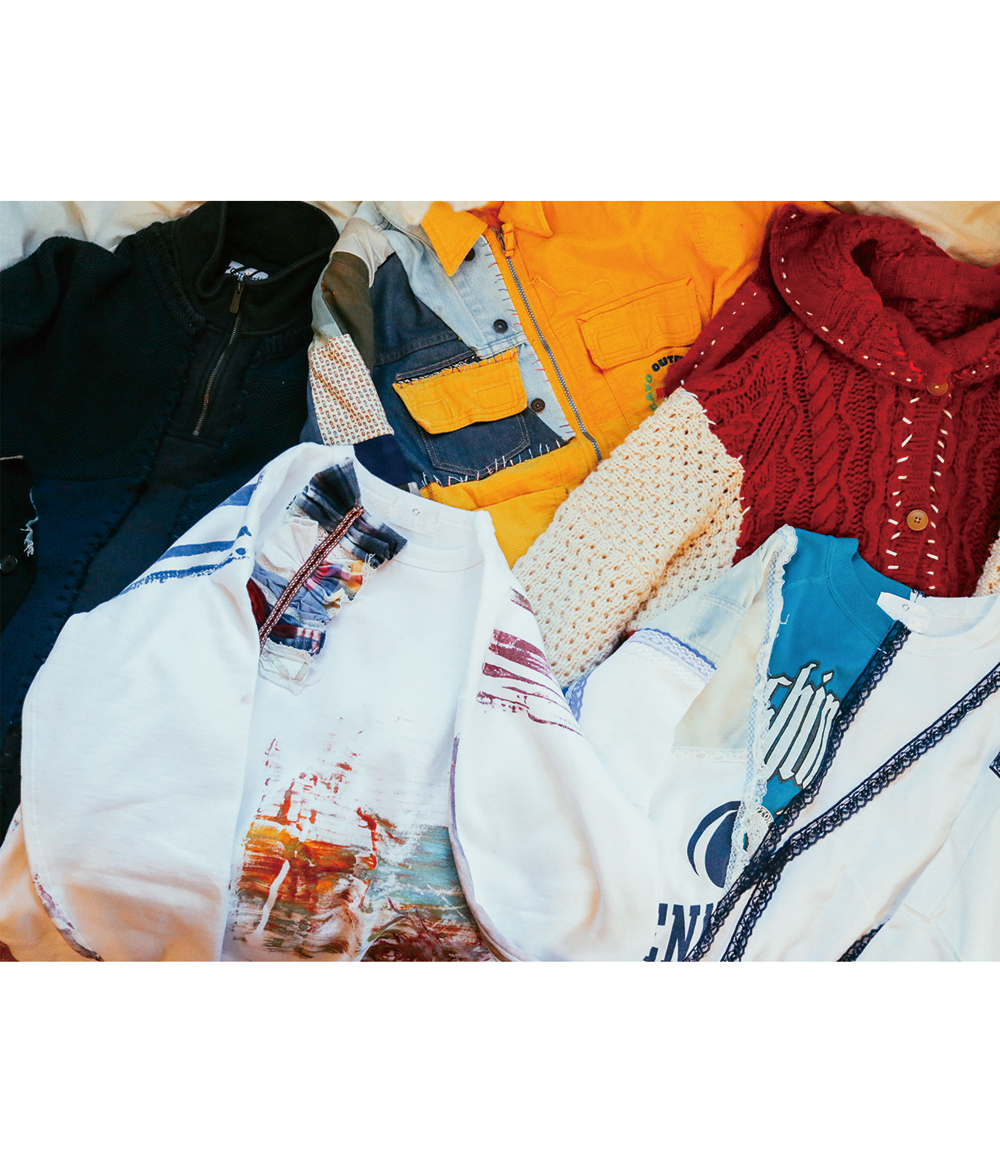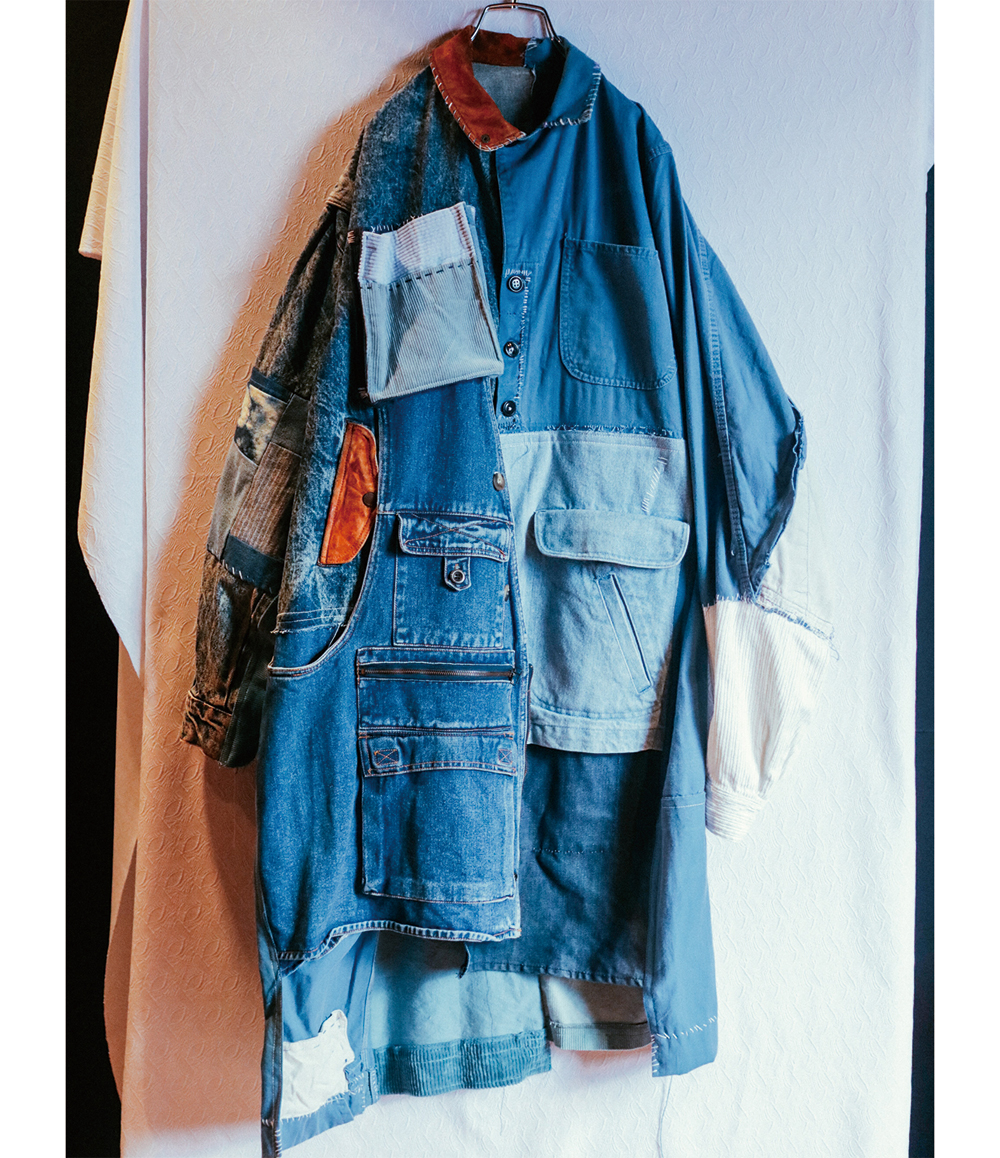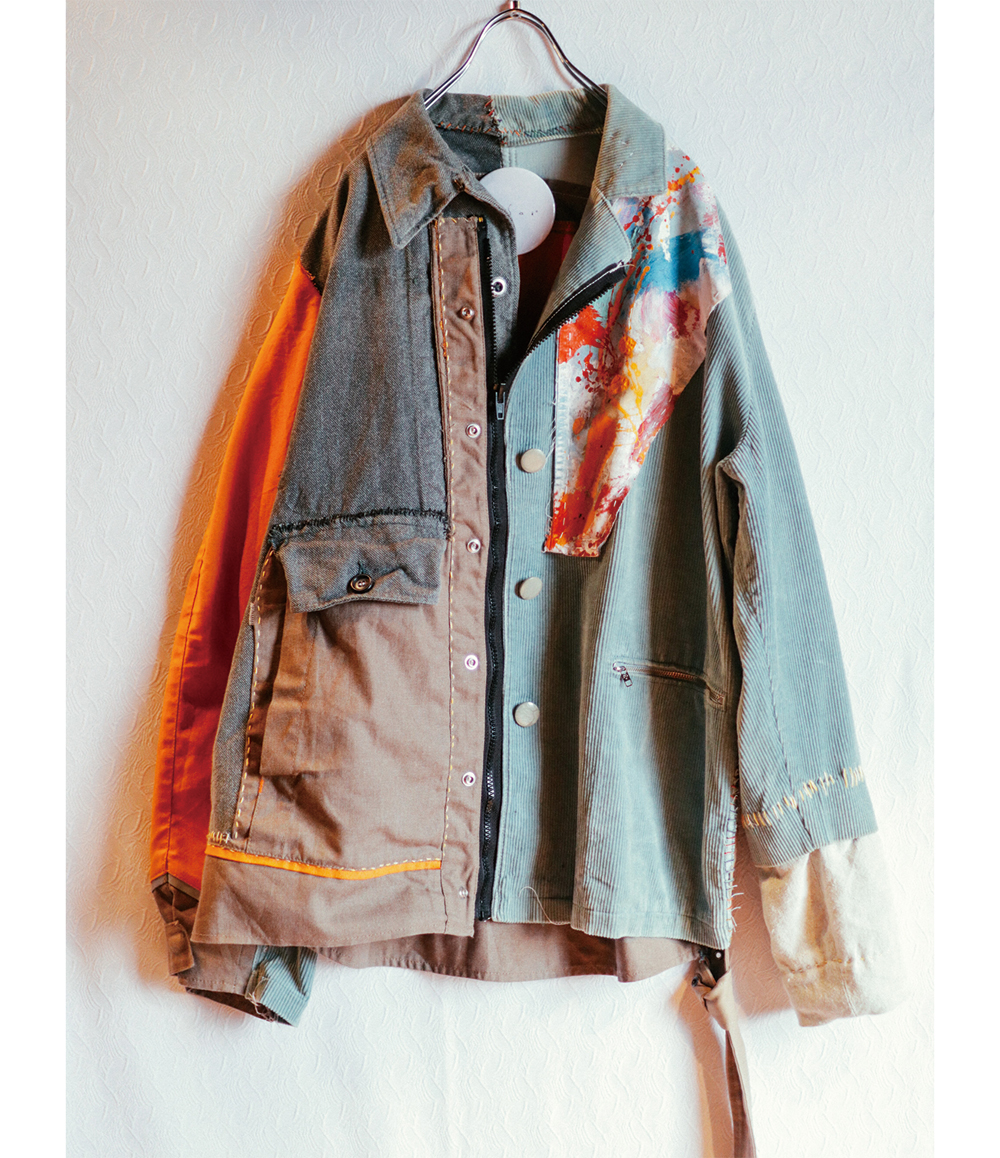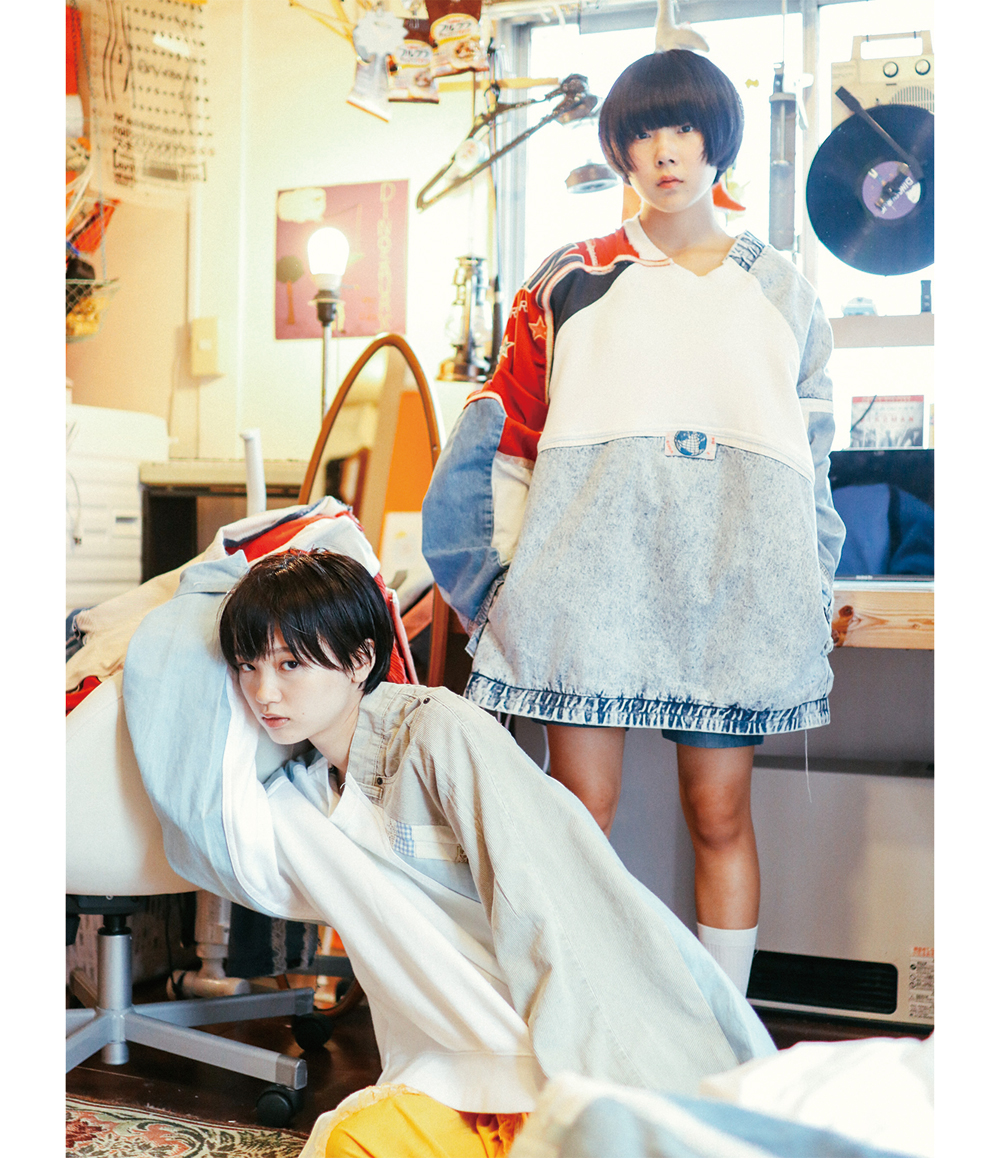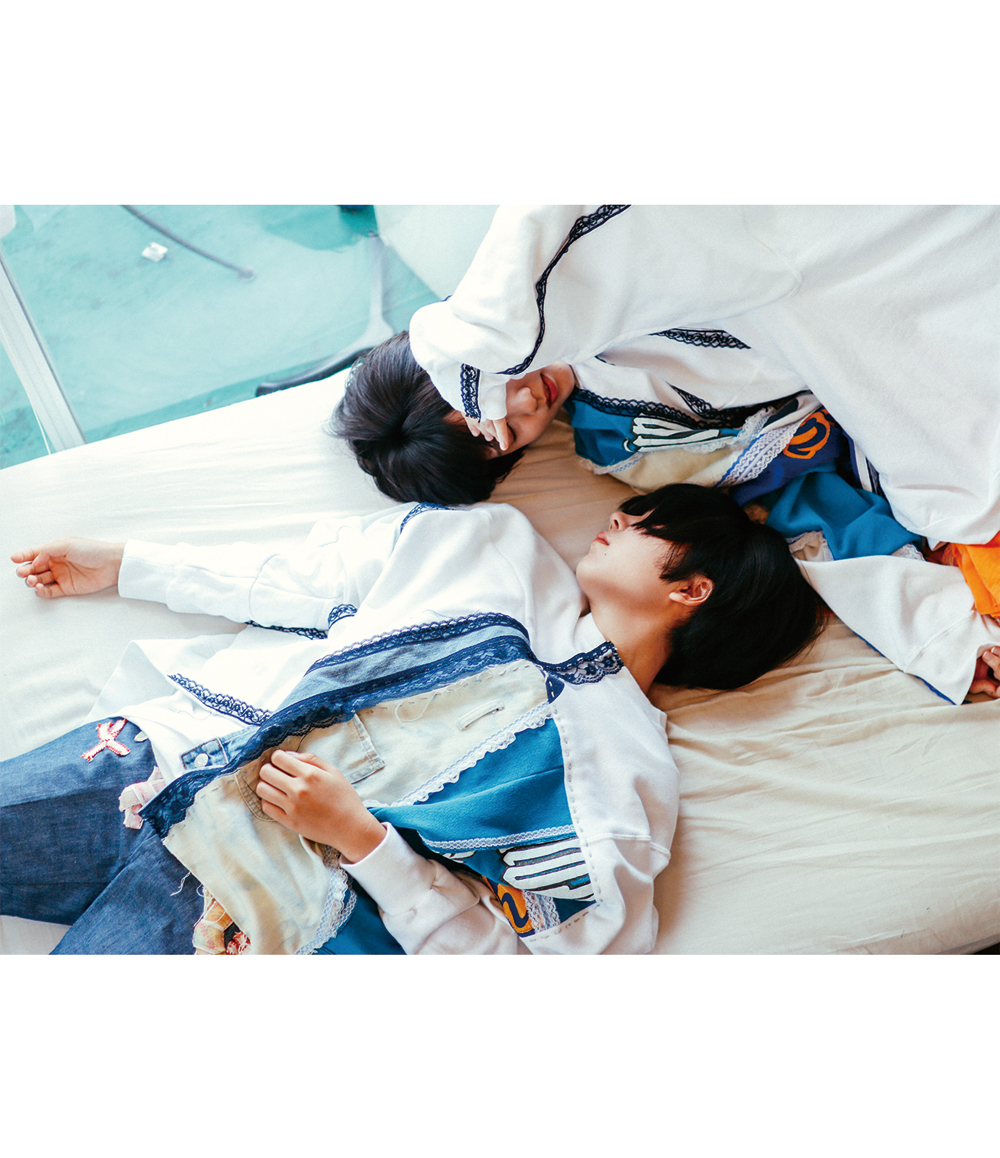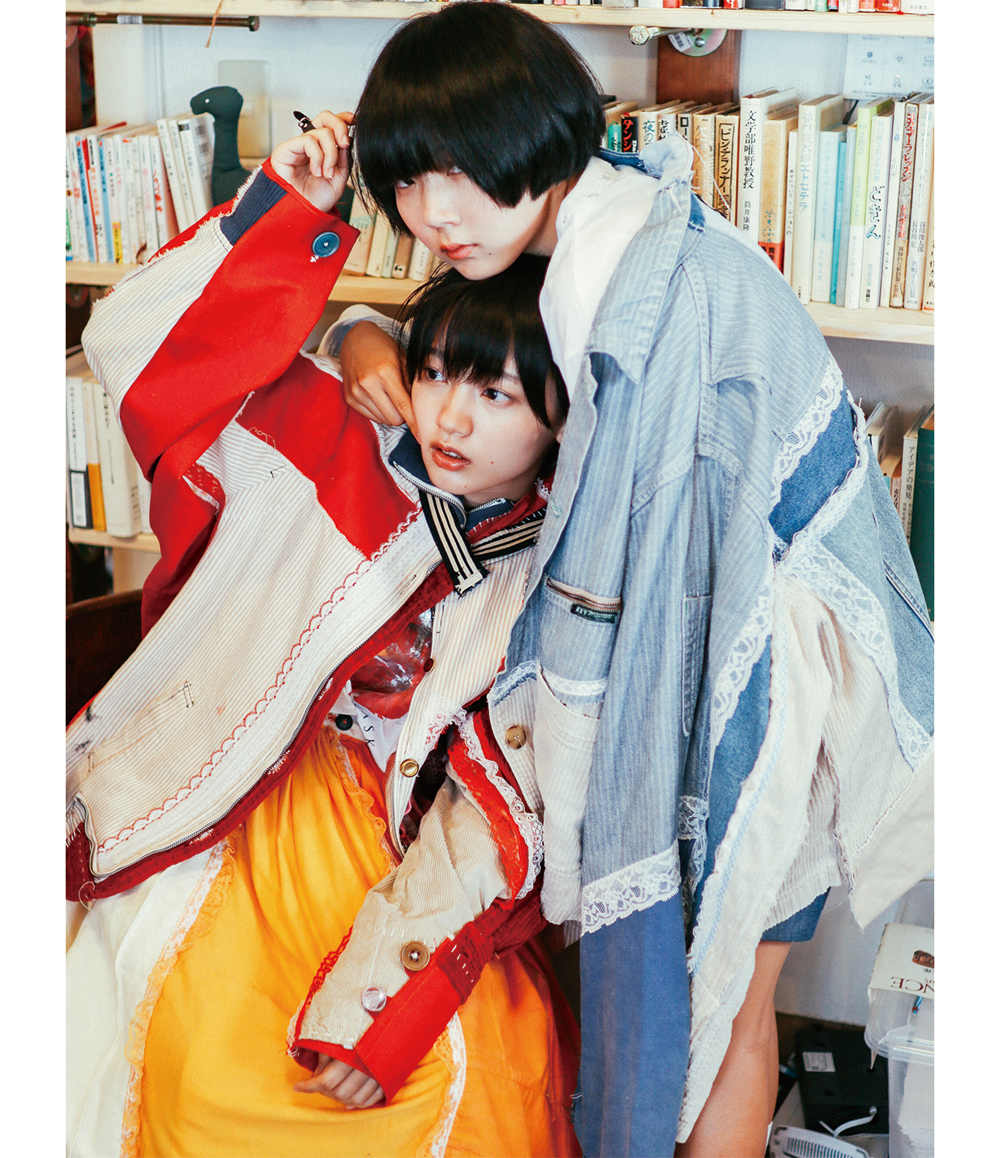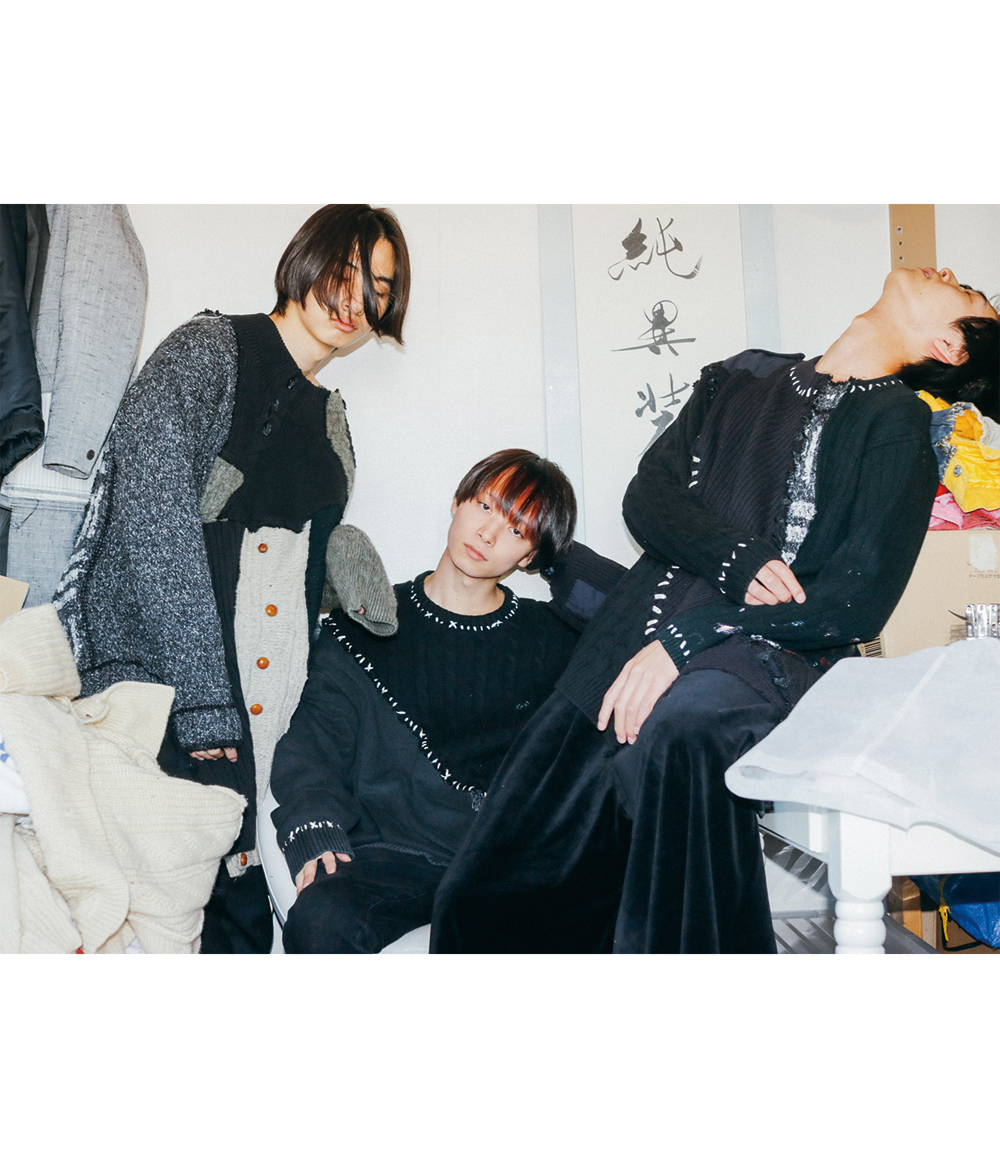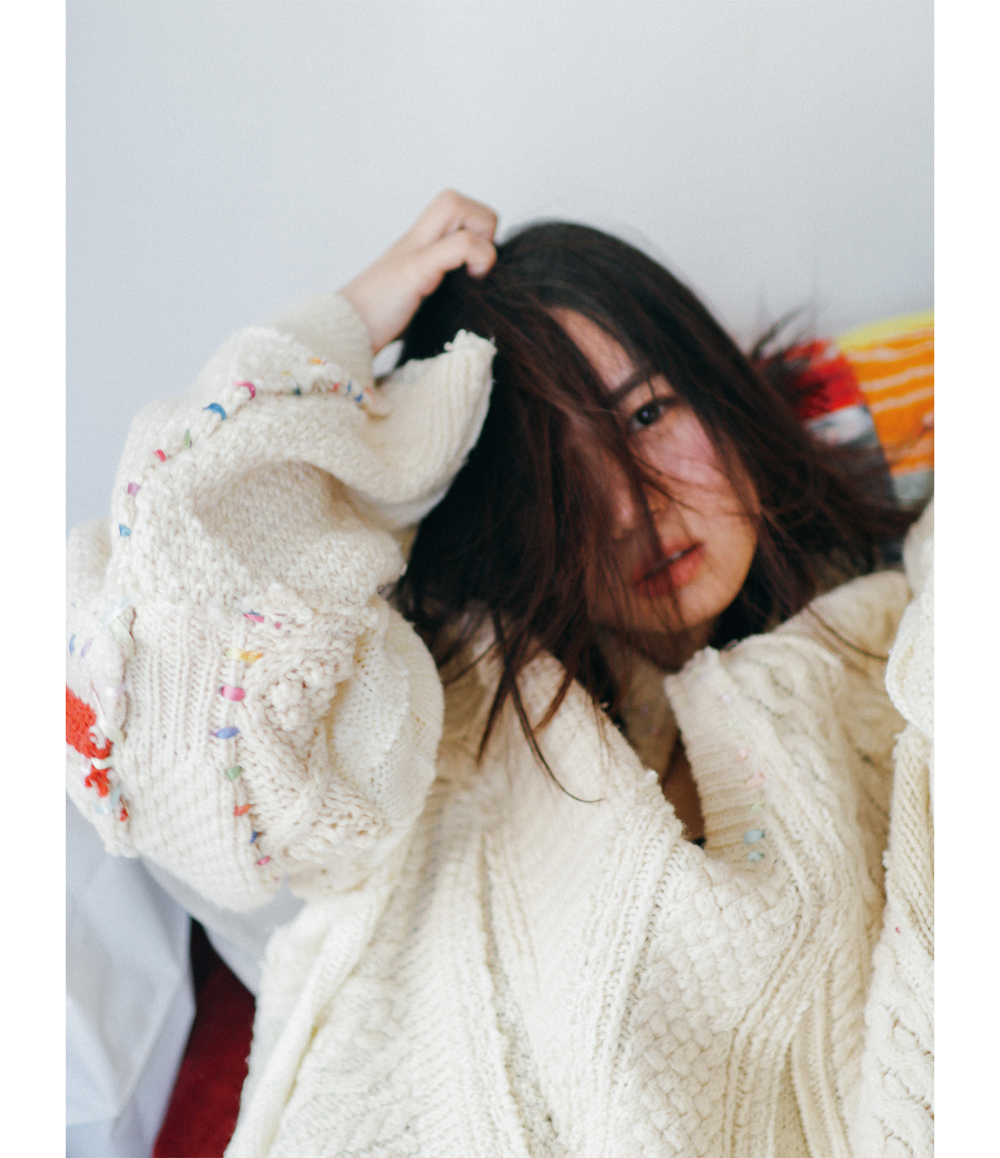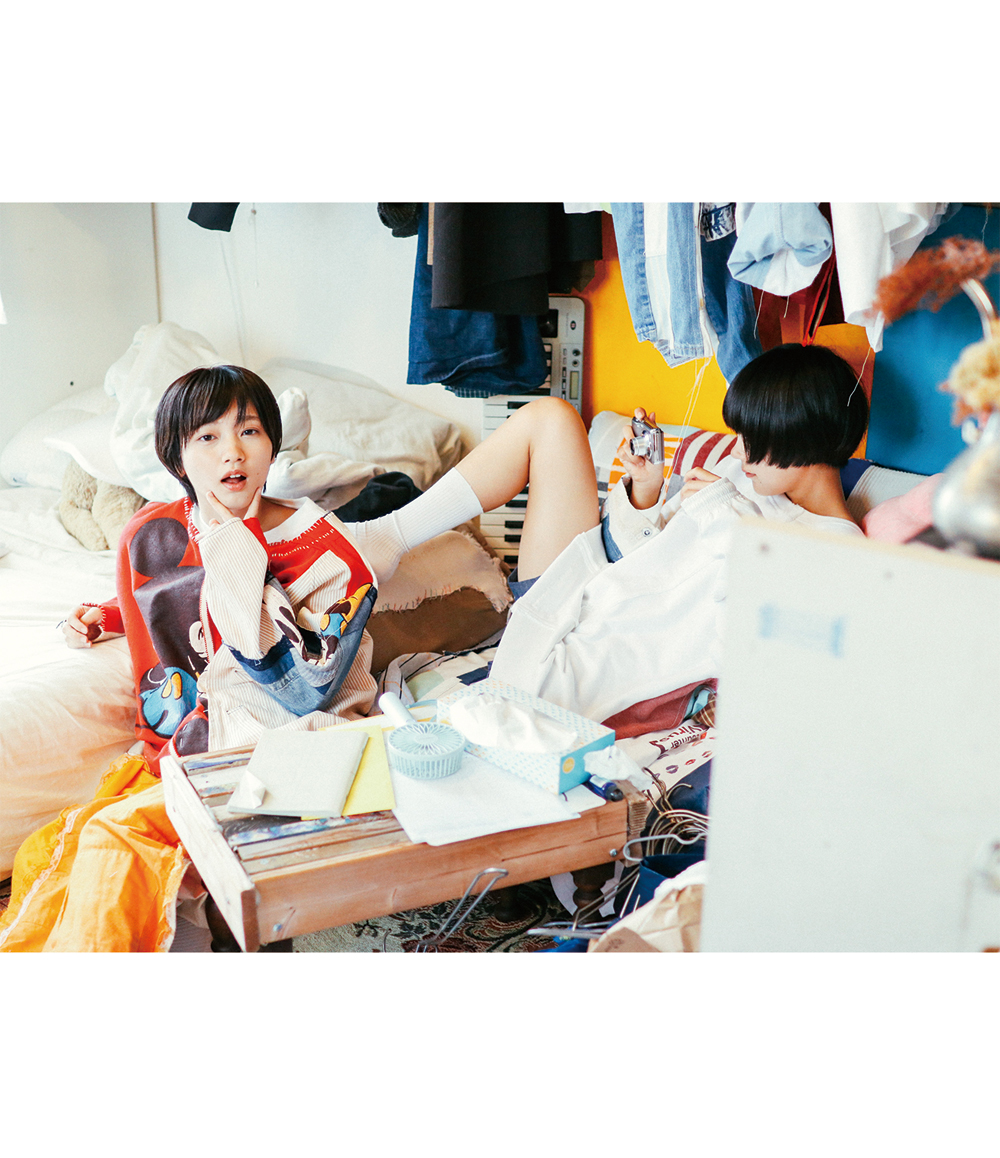Newcomer brand questionnaire | nisai
nisai
nisai
Designer
Naoki Matsuda
Category
Vintage upcycle, unisex, one and only.
Brand information / About the designer
―What inspired you to become a fashion designer? Describe developments leading up to the brand launch.
I had never aimed to be a fashion designer. I started clothes to turn around the people I liked. After deciding to become an artist under the influence of Paul Klee’s art book that I met at the library in junior high school, I was in my teens to early 20s while working extensively on painting, 3D, music, clothes, etc. spent. And when I was 23 to 24 years old when I was unemployed, the last thing I encountered, “clothing,” came to me as the feeling I wanted to express and the medium for that. I thought I met at the end, but in fact, it was a field that I met from the time I was born, chose every day, and kept touching until I died. At that time, the “clothing” of “this medium of expression that everyone chooses every day without leaving for a lifetime” was the best way to turn around an unforgettable broken heart partner. Since it fits my daily life and daily life, I felt that “I want to turn around the person I liked” is a good way to transform my daily life and personal attachment. Taking the attachment that seems to last a lifetime as a “theme”, I called myself a brand without being able to make clothes, started making clothes and accessories on my own, and if I repeated production and announcement, it gradually became brand-like and fashion I feel like I’ve become a designer.
―What is the brand’s concept? What do you want to communicate through fashion designing?
In a word, the concept is “love theme”. There are “clothes that flutter when wrapped”, “clothes that are loving”, “clothes that give you confidence in yourself”, “clothes that can affirm your own boys and girls and immaturity”, “rough but cute” “Clothes” “Special one-of-a-kind clothes” “Clothes that you can feel kindness while you are snuggling up even if you are worried about your daily life or future” “Clothes that are strange but strange” “There is a feeling of one-size-fits-all that can adapt to changes in body shape” It includes the meaning of “clothes”. Converting “clothes” to “people” turns into a story of love that seems to be everywhere. I want to turn it into clothes. The human image I want to propose is a loved one. A person who never forgets the crush. Viva, Love.
―What is your source of inspiration in creating fashion? What is your process of developing a design concept?
There are many museums, art galleries, art schools, important cultural property buildings, etc. in Tokyo. From once a month to once a week, it is important to go directly to somewhere to appreciate it. Also, the “how to wear things I didn’t expect” and “this kind of thing isn’t cute” of the customers who come to the exhibition are always interesting. Know something like extensibility in your clothes. The rest are books and movies. “Fashion and Color” “Unfashion” “Architecture and Fashion” “La La Land” The outside world, the opinions of people. These are inspirations. Inspiration is the source of inspiration, and the source of inspiration is “raw materials.” The concept making is “how to cook the ingredients”. However, what is really important is the “storage method” and “sorting method” that connect the two. To store it, to sort it, you must first swallow it or then pull it in. In your stomach, in your room, in the refrigerator. “Don’t be afraid to take it home” “Maybe it’s a rare ingredient, but try it out” “But don’t eat it up” “Digest properly” That’s how you face the ingredients, cook and ferment Try to see or replace the parts, this is delicious, this is a little persistent, the amount is about the appetizer, repeat the production and announcement, and confront the reputation and results. Then, decide whether to stop or do it, in light of the theme and past production history. That’s how the full course of love is made.
―Who are your current stockists (areas, retail formats, etc.)? Describe the typical followers of your brand.
There are three types of sales: individual exhibition, consignment sales, and EC shop. Private exhibitions are held once every one or two months at the event space operated by Kichijoji Book Mansion, and the main contractors are Utsunomiya naname and Shibuya PARCO New Star. The brand’s fans are about the same as men and women, and they have a wide range of age groups and body shapes. In a good way, many people have a wide range of interests other than fashion. Many people take good care of what is made by hand and the thoughts put into it, and I get the impression that each and every piece of clothing you have is taken care of, regardless of your own brand of clothing.
―Which brands, designers, styles and cultures have had the most impact on your fashion designing, and why?
All past and present lovers, and all the clothes they wore.
About 2021 A/W collection
―Why have you chosen Tokyo (Rakuten Fashion Week TOKYO) as the venue for presenting your collection?
Promise to use when launching the brand
―What is the concept / image for your brand’s 2021 A/W season?
nisai
―What is your vision for your show / installation?
Most important secrets
Future
―What are your brand’s future outlook and goal?
To perform a show that is packed with the brand’s world view in every detail.
Disseminate domestically and internationally in collaboration with Rakuten fashion week tokyo.
We recognize that it will lead to an increase in awareness in a chain reaction.
The higher your awareness, the more customers and business partners you will match.
Currently, I go to a used clothing wholesale warehouse to purchase used clothing materials.
Concept making, production, photography, inspection management, office work, sales at exhibitions, etc.
I am involved in a series of activities myself.
By increasing the number of business partners and sales that match your activities,
There are more places where you can rely on some of the “work other than production” that you have been doing so far.
As a result, we concentrate more on the time of “work production / proposal” which is the core of the brand.
In the field of “creative direction” such as “what to make” and “who and how to deliver”
I think I will be able to turn my time and consciousness.
What is the future outlook?
Create margins for production, lift restrictions, and improve freedom of creation and teamwork.
Collaboration with different industries and realization of overseas expansion.
Increase the number of “towns / bases with people you like”
Pursuing new ways of thinking and expressions that are created by going back and forth between there and your current location.
Because it’s a brand that has been driven by the love and support of someone
To create a flow that can return and circulate better things to those who will support and those who will be involved in the future.
Making clothes and announcing them in the above flow is regarded as “the second chapter of making clothes with the theme of love”.
Proceed to the next page.
Have you read this story to the end someday.”
About TOKYO
―What does Tokyo represent for you?
Tokyo is a city that has the depth to make everything look brand new every time you meet a single lover, thinking that you have exhausted everything.
―Which parts / sites of Tokyo do you like most? Why?
Jimbocho. A town with an antiquarian bookstore in the city that inspired me to admire Tokyo since I was in junior high school. A city of treasures, a seed of knowledge and curiosity. Ochanomizu. The view from the bridge in front of the station is the scenery that competes for 1st and 2nd place in Tokyo. Kichijoji. Even after the second year of living, the city is still full of new and wonderful spots and encounters with people. I also like places where it is easy to invite a walk. Meguro Gajoen. Guest house. Nishi-Ogiku. At night, the ladder liquor at the bar at the south exit is fun and the yakitori restaurant is really delicious. In the daytime, it is a fun city to take a walk at the north exit and visit second-hand bookstores and general stores. Shinjuku Kabukicho. I haven’t been to many places in the last year, but I have the most favorite bars and the city I used to go to most. A city with a mixture of deepness and freshness, where hosts who are open in the morning drink together on the street when they drink in front of TOHO Cinema after drinking until morning. Ueno. There is the strongest standing bar in Tokyo. The word “But I’ll do it” on the wall of the shop here always cheers me up when I’m at a loss. But I’ll do it. Isn’t it a good word?
―What are your favorite / recommended shops (of any genres, e.g. fashion stores, homeware stores, food services), facilities and sites?
Inokashira Park
Regarding the COVID-19 Corona virus
―If any, please tell us any changes you’ve made to the brand and/or designs due to the spread of COVID-19.
Last year, a state of emergency was issued just during the exhibition. Due to restrictions on exhibition activities and daily changes, the clothes I wanted to make and deliver changed inevitably. The clothes that I made before Corona emphasized the romance that is different from everyday life, saying, “It’s okay if you can wear clothes that you can’t forget even if you can’t always be together.” I made only rough clothes, bare ego clothes, and clothes with strong damage processing. However, the way of thinking of “everyday” is reversed from after corona. The premise was that it would be difficult to get out, and clothes that would make you feel better and thrilled even when you were messing around in your room or taking a walk in the neighborhood. I felt uncomfortable expressing “romance” in “my story = ego”, and my consciousness began to turn outward. “What kind of clothes do you love now?” “Let’s cover the seams with lace to reduce the burden on the seams that hit the body.” Or “Rather than masks, wear clothes that affirm the lips covered with masks.” “I will announce a T-shirt that collects and prints 100 kiss marks” and “I want to pursue a way to make materials that do not die anywhere” and “I want to find a way to make 100% of used clothing materials” And, although it is a one-size-fits-all, I repeat fine adjustments so that the size is not too large. While keeping the theme and question of “what kind of clothes should I make for my favorite person”, the way I approached the answers gradually changed. Almost all exhibitions use a reservation admission system. It was a big turning point for brand growth, as I had more time to think about how to make better clothes and how to provide and propose them. However, the question of this issue is not over yet. No one knows what will happen. I myself may suddenly collapse tomorrow. It is in such an era that I have entered this time as the timing to hold a show that conveys the energy that supports, hugs, and supports people. I hope it reaches as many people as possible.


